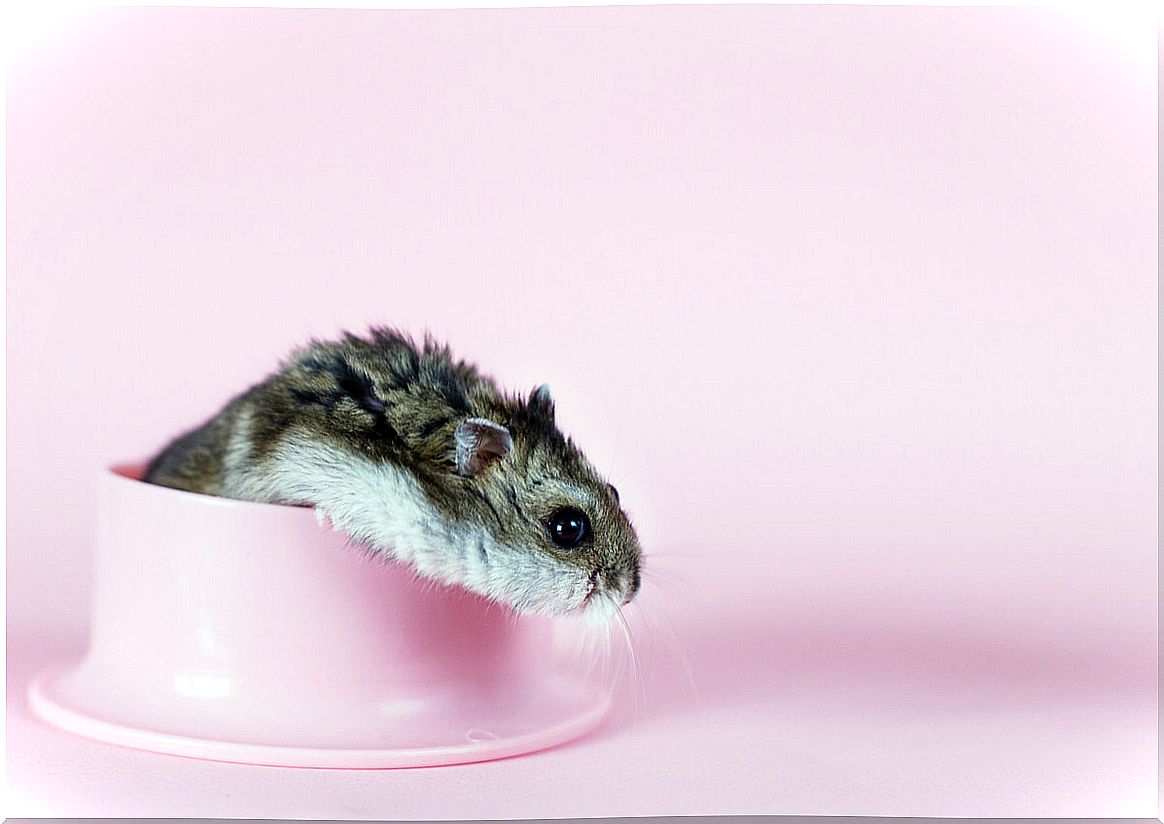Diarrhea In The Hamster: Causes, Symptoms And Treatments

Diarrhea in hamsters can be a sign of a serious pathology, such as wet tail disease, but this is not always the case. Sometimes it is due to dietary problems, while at other times there are certain viral and bacterial agents that cause it temporarily.
Knowing the underlying reason for a diarrhea in the rodent can be a real challenge, since the causes are multiple. In any case, the animal will need a series of specific care during the time interval that the disease lasts, otherwise it may end up suffering from severe dehydration.
Causes of diarrhea in hamsters
Diarrhea is defined as the presence of pasty or liquid stools whose stools occur 3 or more times a day. As you can imagine, the terminology of this clinical picture in a hamster is different from that of humans. In rodents, diarrhea is considered as such when the stools are watery and light in color.
In contrast, a healthy hamster’s stools are blackish, small, circular, and hardened. Some of the most common causes of diarrhea in hamsters are the following:
- Changes in diet: diarrhea usually occurs when the hamster begins to eat foods that are too high in water, such as lettuce and other vegetables. Otherwise, the animal looks just as energetic and vital as ever.
- Antibiotic use: Sometimes antibiotics prescribed for an infection can wash away the bacterial flora of the animal’s gut. This makes it easier for opportunistic parasitic agents to colonize it.
- Infectious Agents: Bacteria such as Salmonella and some viruses can cause gastrointestinal illnesses in hamsters.

Importance in humans
As indicated in the newspaper El Mundo, salmonellosis in hamsters is a zoonosis. This means that if infected rodents are not handled properly, the disease can be transmitted to the guardian. Salmonella bacteria settle in the host’s intestine and cause diarrhea, vomiting, and nausea, among other things.
The bacteria is transmitted through feces, so it is necessary to put on gloves and disinfect your hands every time the sick animal’s cage is handled. It is also essential to isolate the infected hamster from the rest of the animals in the house and limit contact with it to the minimum and necessary.
Symptoms of diarrhea in hamsters
The main symptom is clear: a profuse production of watery, discolored stools. In any case, depending on the causative agent, the animal will present more or less clinical signs. For example, if the diarrhea is caused by diet, the pet will be active and will not show any other signs of discomfort.
On the other hand, bacterial infections can be accompanied by lethargy, listlessness, loss of appetite, and anorexia. The wet tail disease in hamsters – caused by the bacterium Lawsonia intracellularis – is the most lethal variant of all, as it usually causes the death of affected specimens in 48-72 hours.
Treatment
If the cause of diarrhea is exclusively dietary, it is advisable to completely restrict wet food until it stops. Meanwhile, dry foods such as seeds and specialized rodent fodder can be given to the animal. In these cases, the clinical picture should resolve itself in a couple of days.
On the other hand, if the diarrhea persists and the animal shows other associated signs, it is vital to go to the vet. Depending on the causative agent of the infection, the professional may prescribe antibiotics or other drugs. In the most severe cases, the hamster is usually given intravenous fluid therapy, so that it does not become dehydrated.
The importance of water
Faced with these clinical pictures, one of the greatest threats is dehydration. Hamsters are very small animals with very fast metabolisms, so it is common for them to use up their internal food and water reserves in a matter of hours. In diarrhea, the loss of water and electrolytes multiplies considerably.
For this reason, it is essential that the hamster has at its disposal several containers of water so that it can drink during its illness. If not, you could die quickly from metabolic complications associated with dehydration.

The hamster is an animal very susceptible to possible diarrheal pictures. Due to its fast metabolism and the few nutritional reserves that it presents in its organism, a prolonged diarrhea in time can be fatal for him. Therefore, if you have any doubts or any of the mentioned symptoms, it is best to go to the vet quickly.








